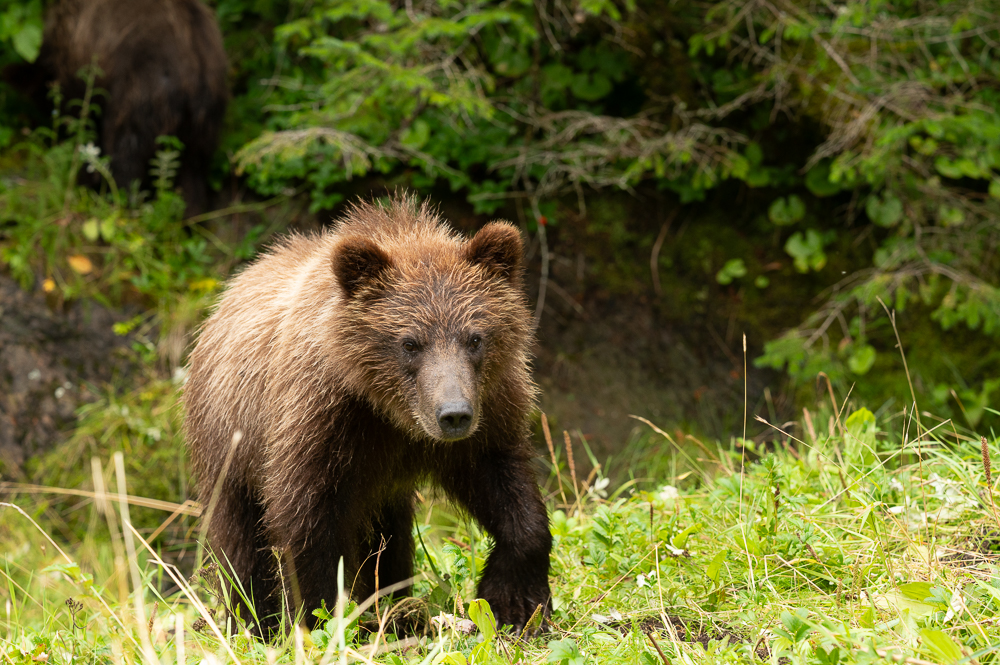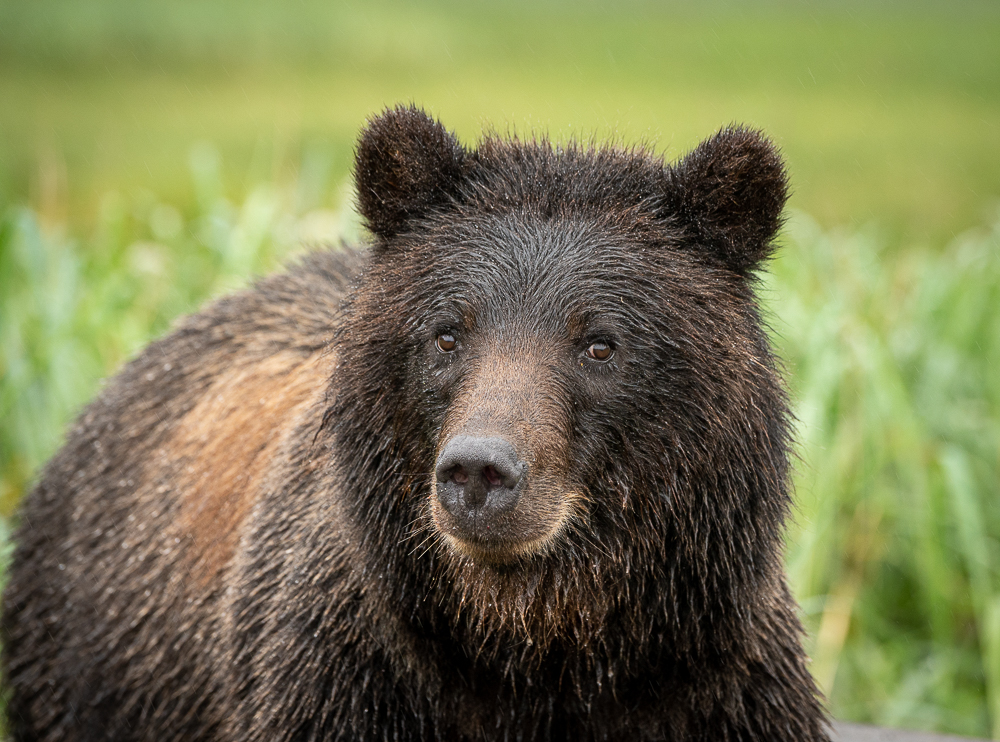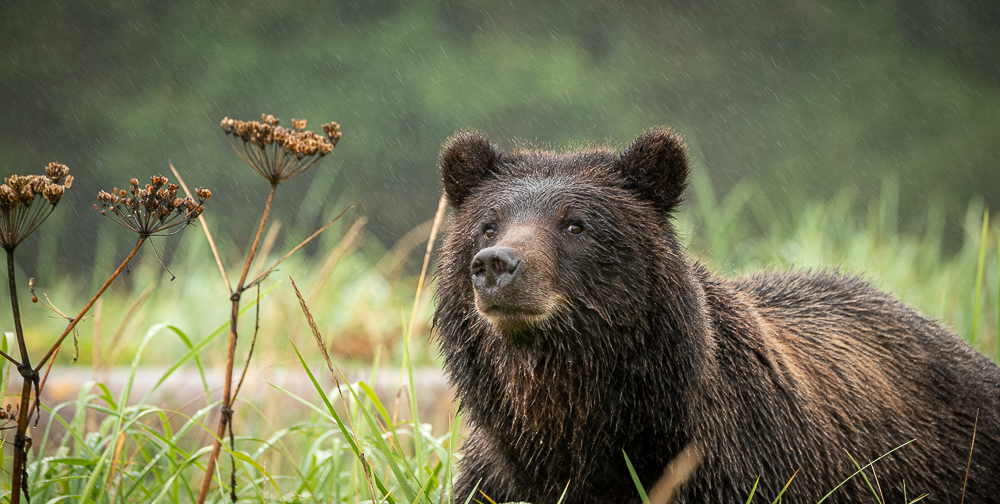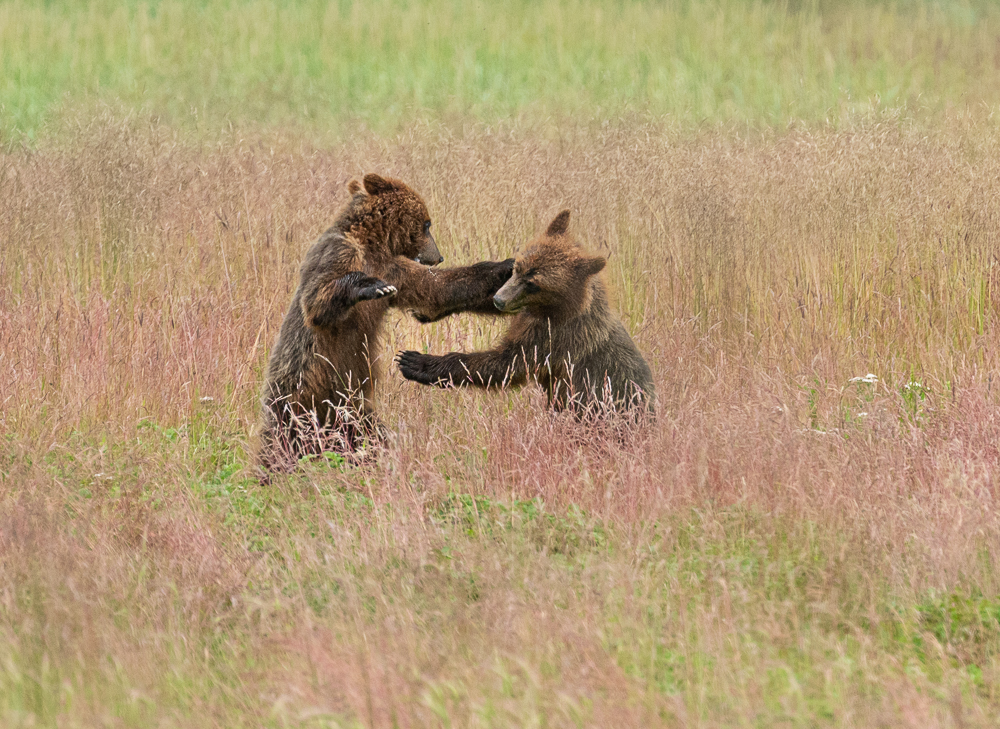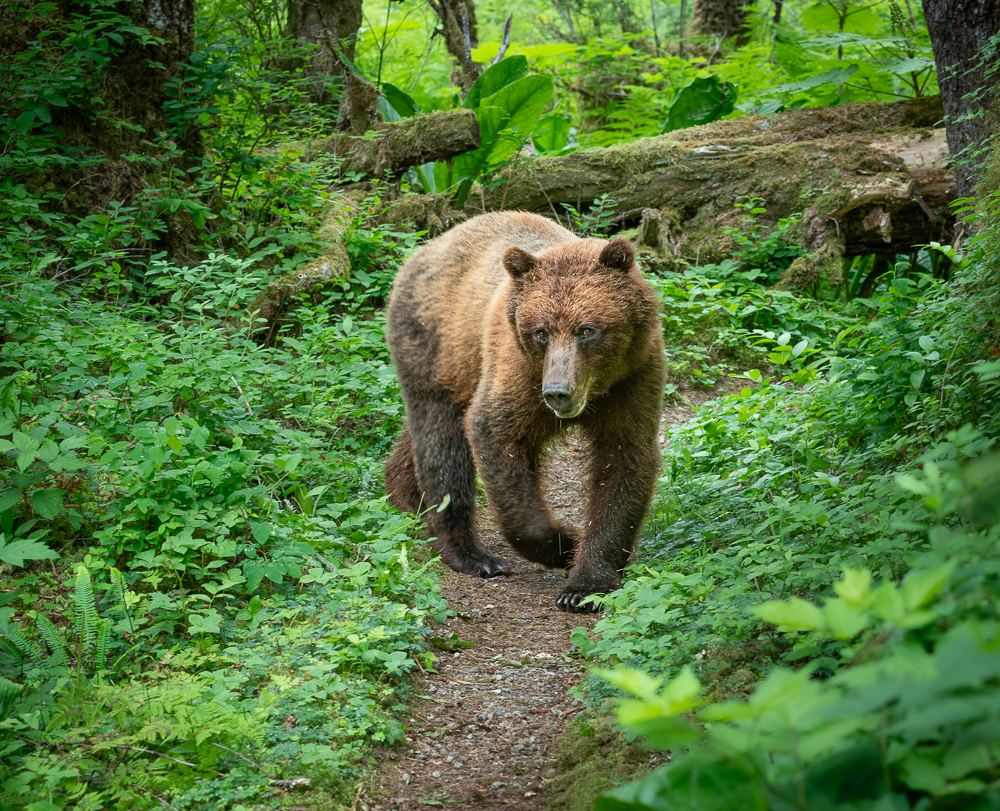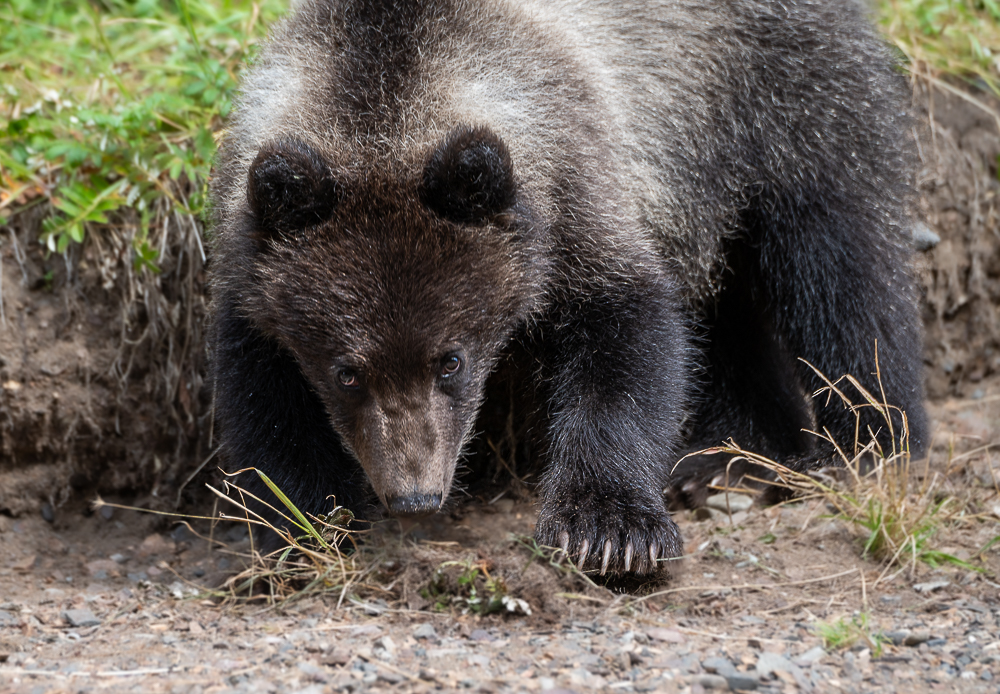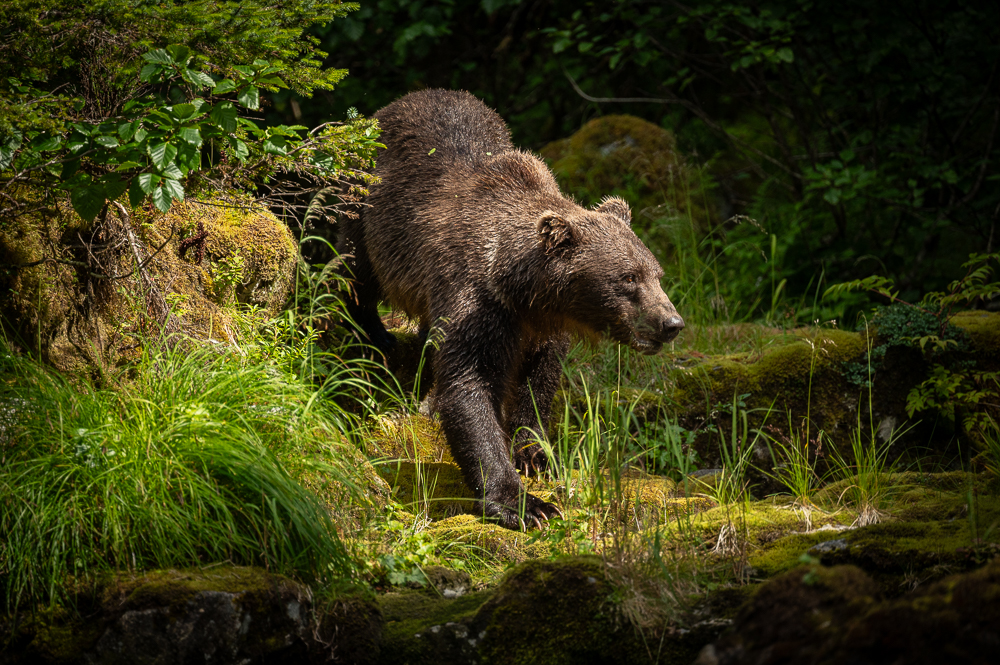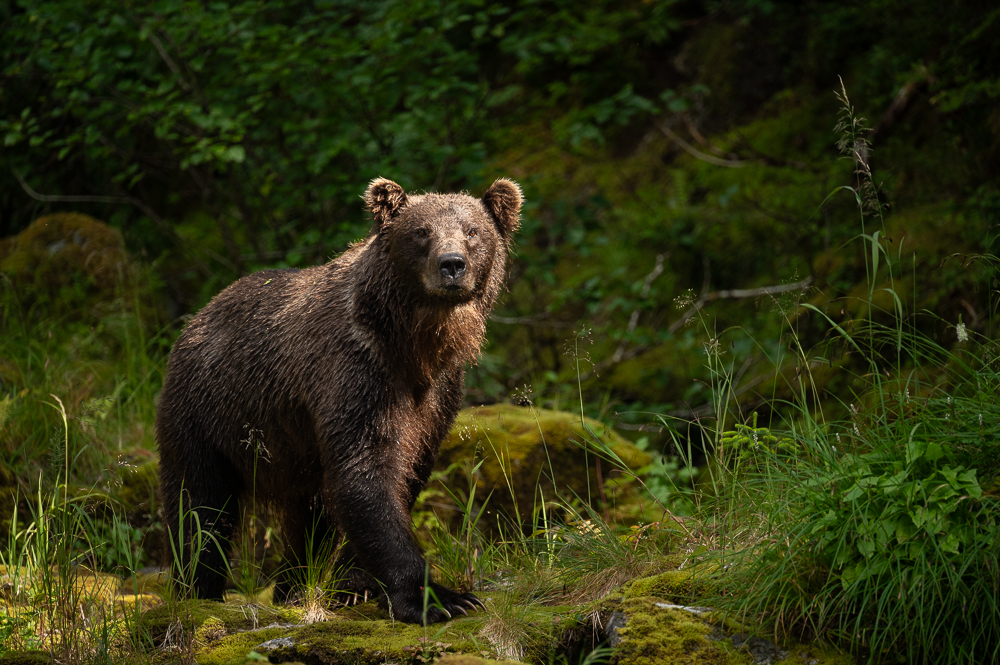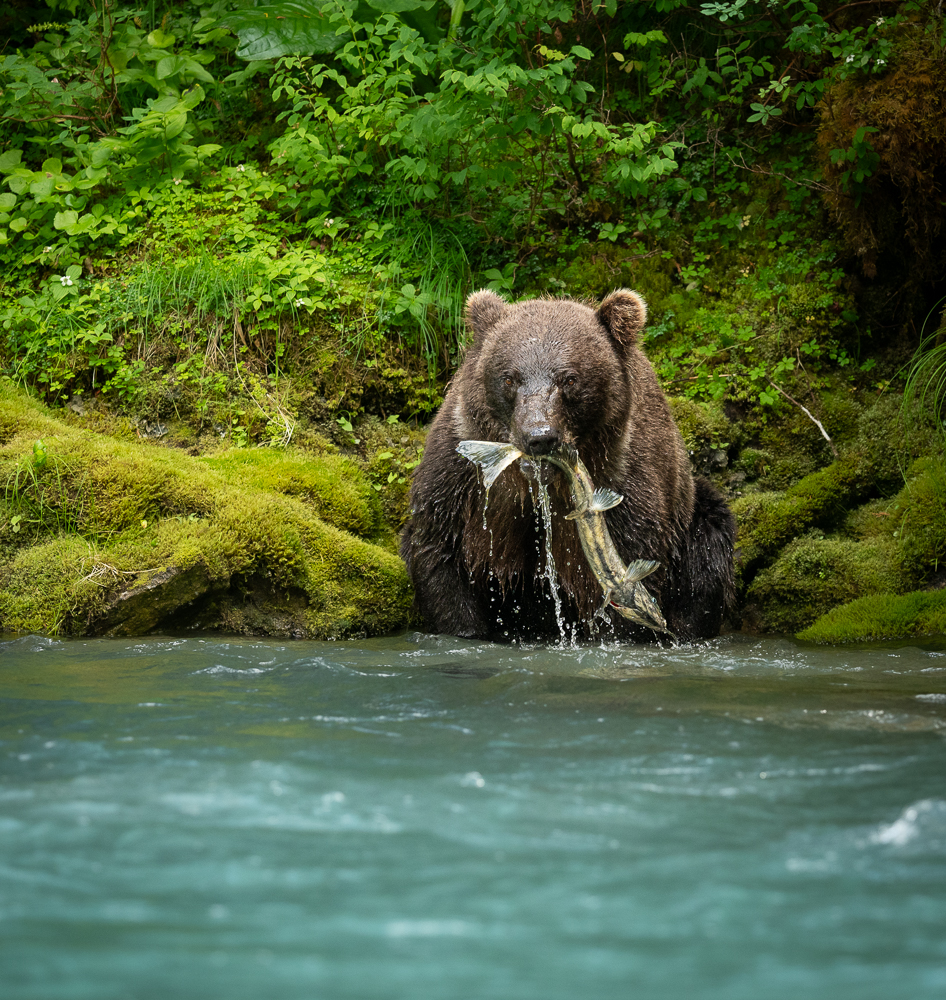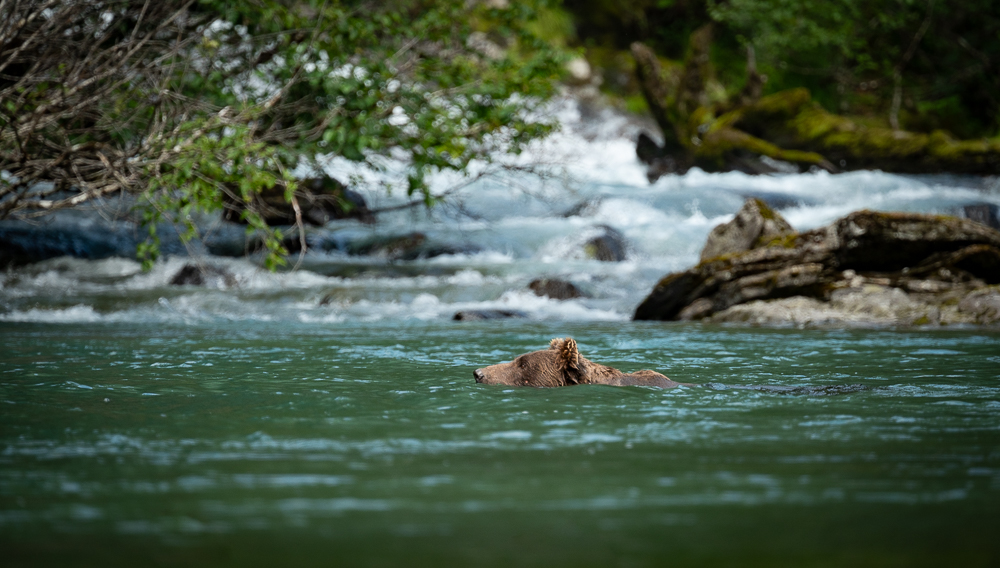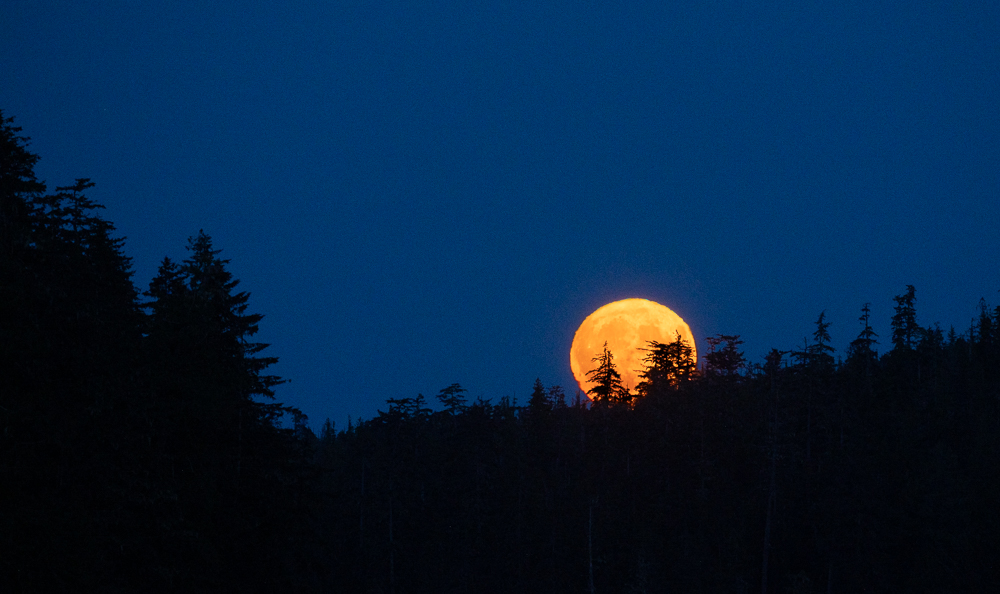This post is about my favorite Charismatic Mega-Fauna in three sizes: big bears, little bears, and in-between sized bears. I’ll start by introducing you to Miss Chevious (also known as “Bad Girl”, but that seems too harsh) – a small 3 year old bear who was kicked out by her mother this spring (a sub-adult). These young bears are still trying to figure out their world – they’re the bears I watch most carefully since they can be less predictable.
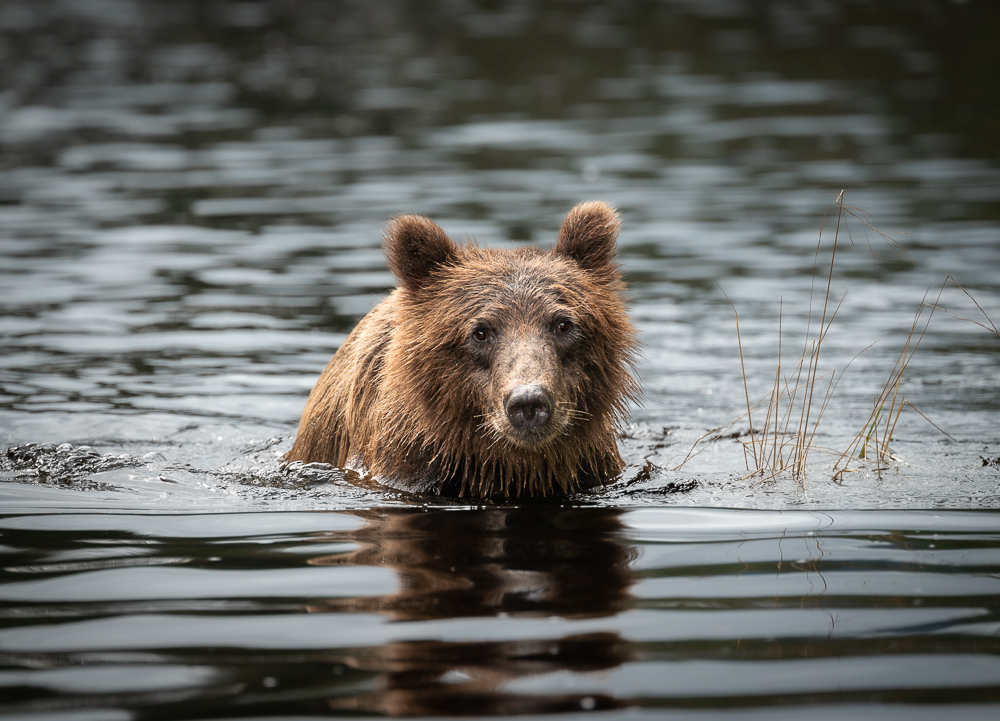
Miss Chevious was definitely curious and a bit pushy, but she was also smart and not a brat. I spent several days hanging out with bears on Chichagof Island, and they kept me on my toes.
A professional photographer and her husband were around while I was there, and they had a bad habit of leaving their big camera rig unattended while they moved to a different spot with a different camera. Any bear can be curious, but this little gal made a bee-line for the very expensive rig as soon as she saw it without humans around.
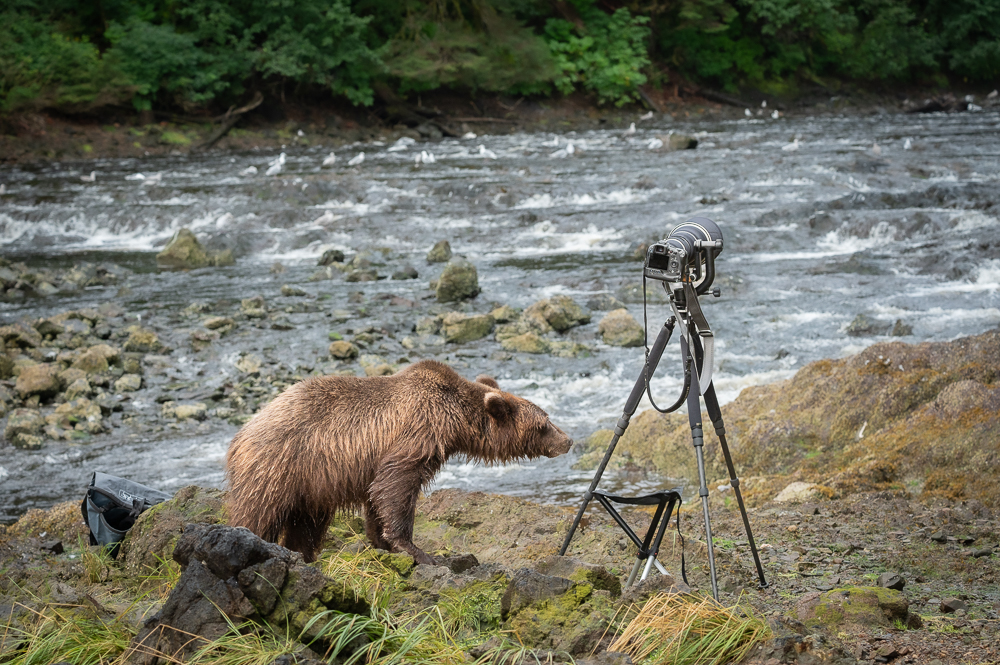
I had just come ashore and saw where she was headed, while the owners of the $30,000 camera weren’t paying attention. Fortunately I was able to catch up to her and suggest that she go back to catching fish in the stream.
Every day I would come ashore in the kayak, tie it off to a tree with a long line, and keep it floating out in the water so bears wouldn’t bother it. One morning it got caught on a rock and was stuck at the water’s edge, and when I checked on it… there was Miss Chevious again!
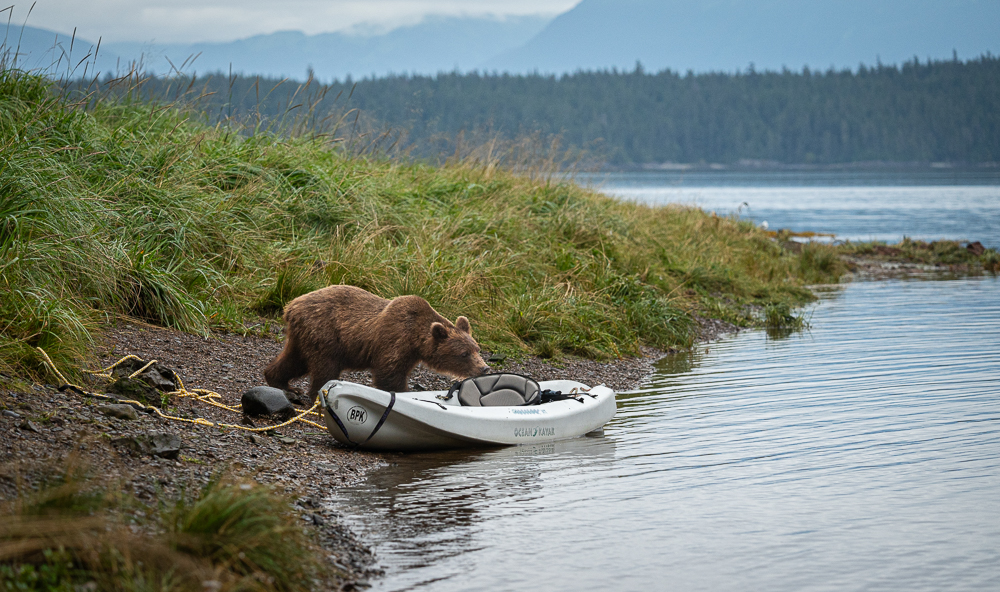
She just sniffed it, and tasted the bow a little… no harm done. I had to tell her to leave it alone a couple of times, but everything was okay.
While all this was going on, we were watching a sow and her three little first-year cubs, another sow with two second-year cubs, a pair of sub-adult (but a little older) sisters who constantly play-fought, and an array of other bears that came and went as the tide changed.
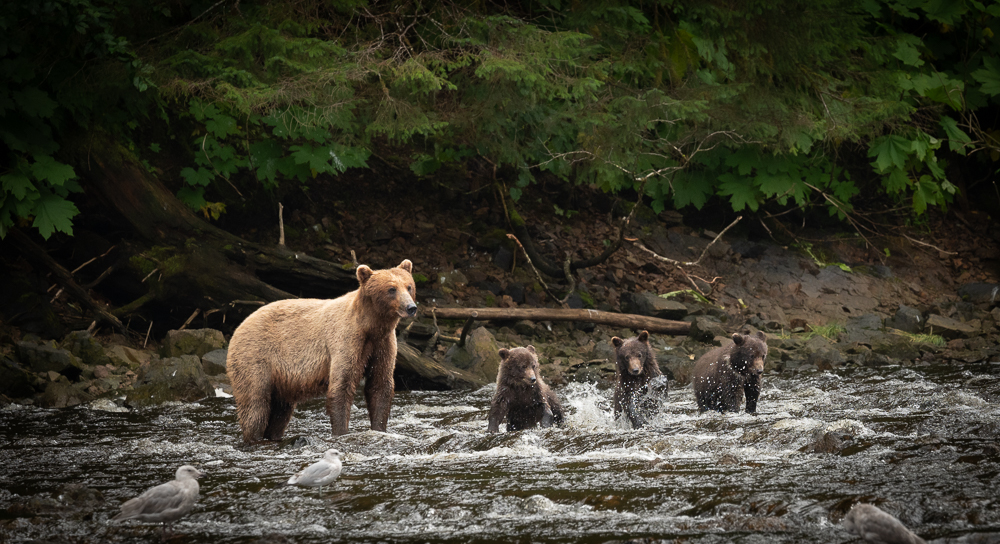
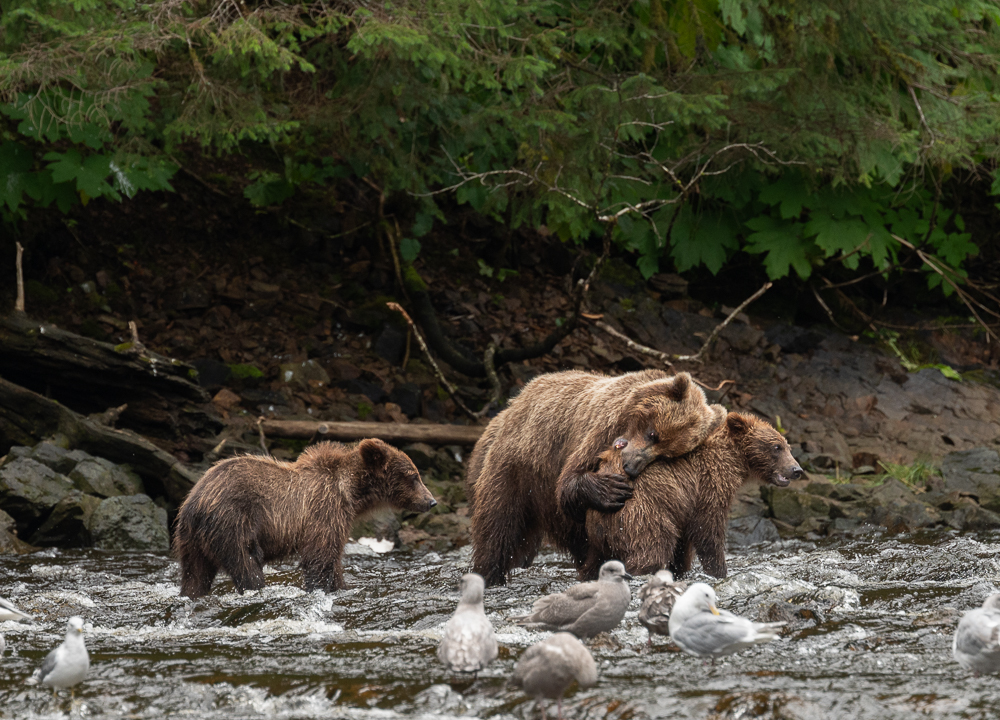
As always, the youngest cubs were just adorable, making funny faces, chasing fish (but not really able to do much if they caught one), play-fighting, and rolling around.
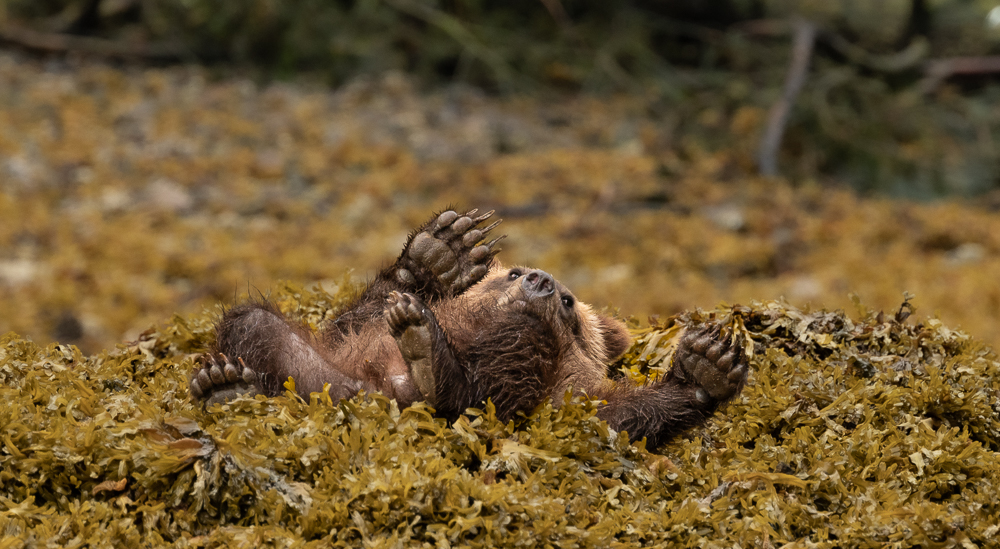
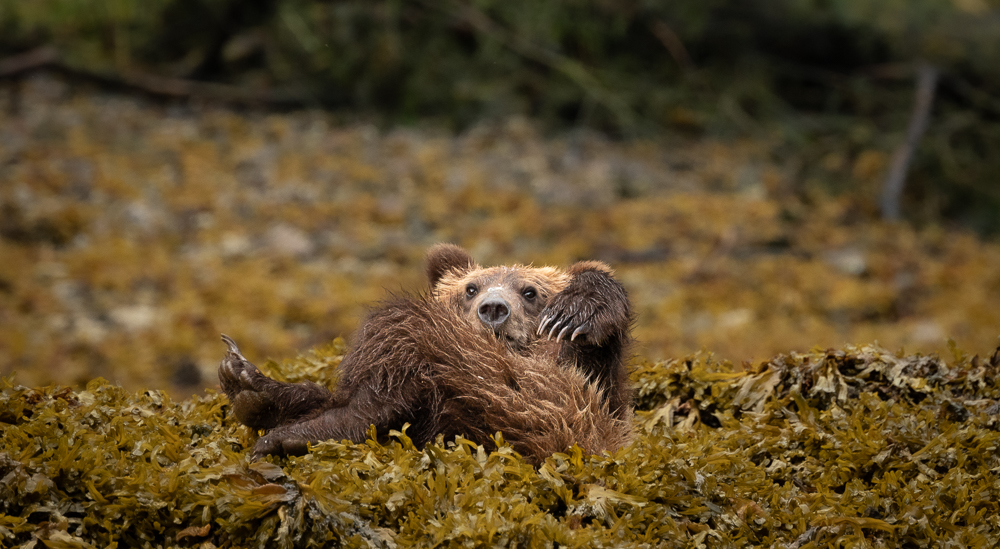
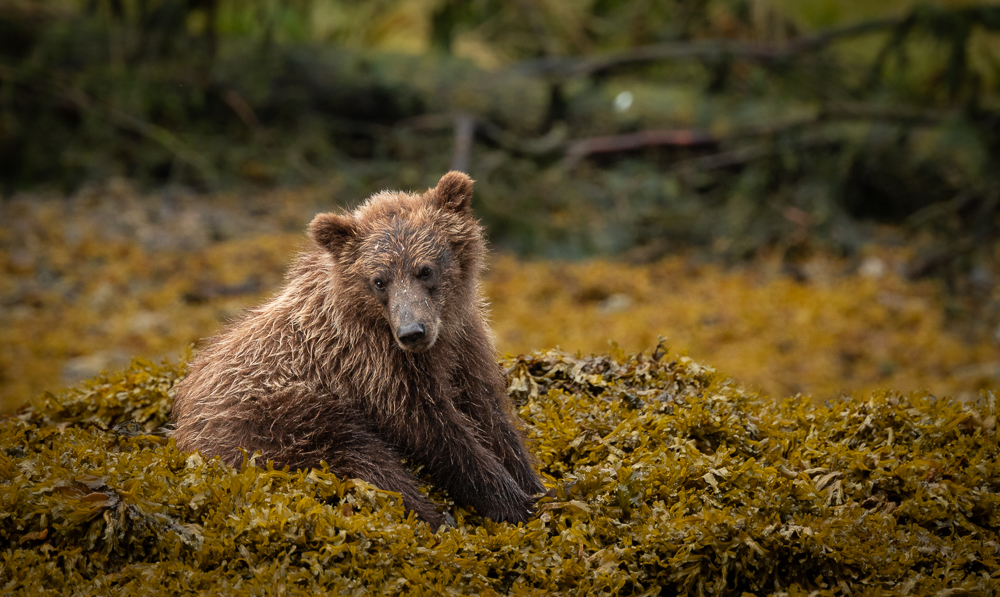
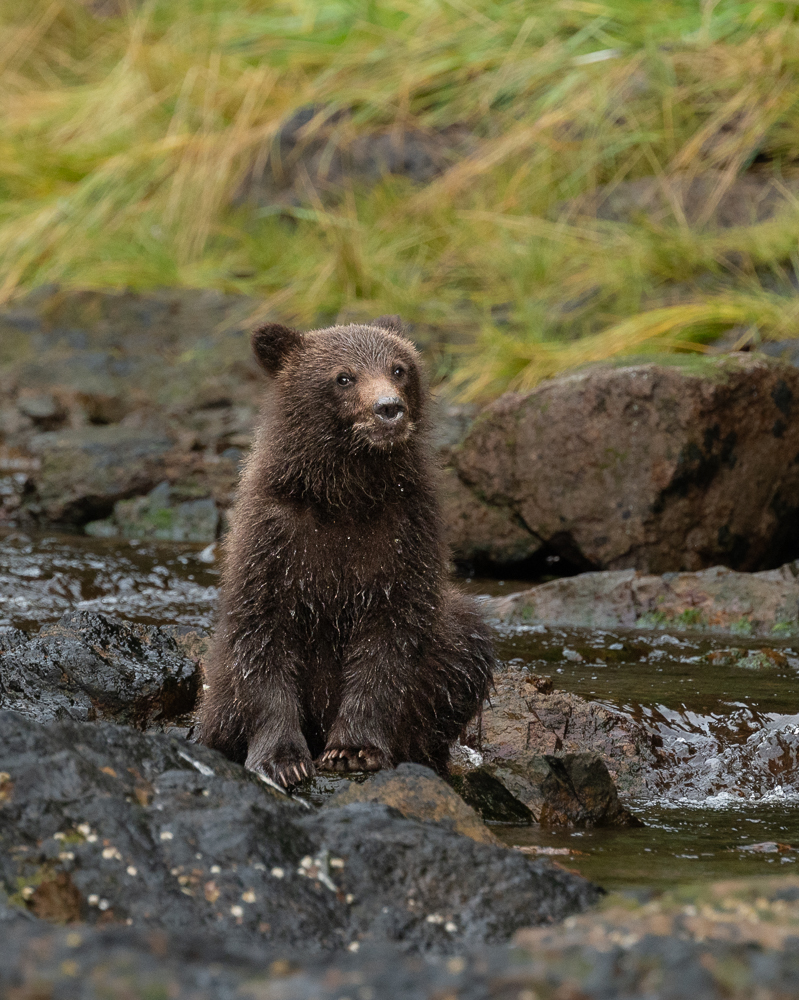
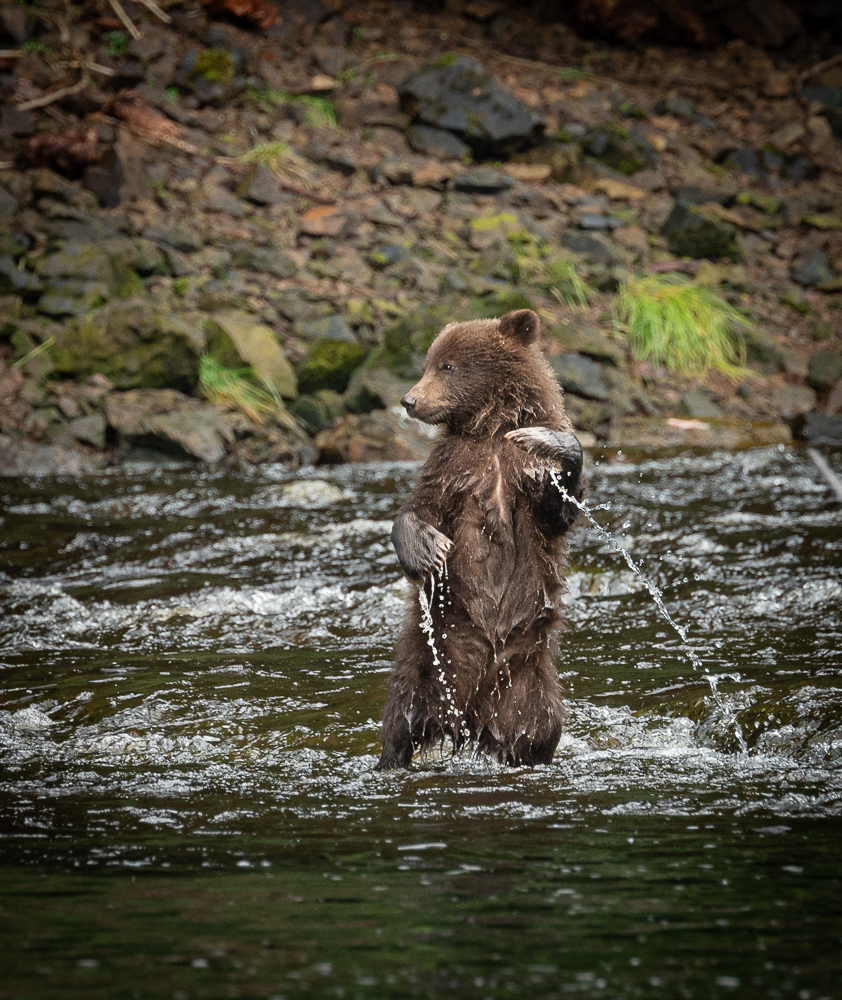
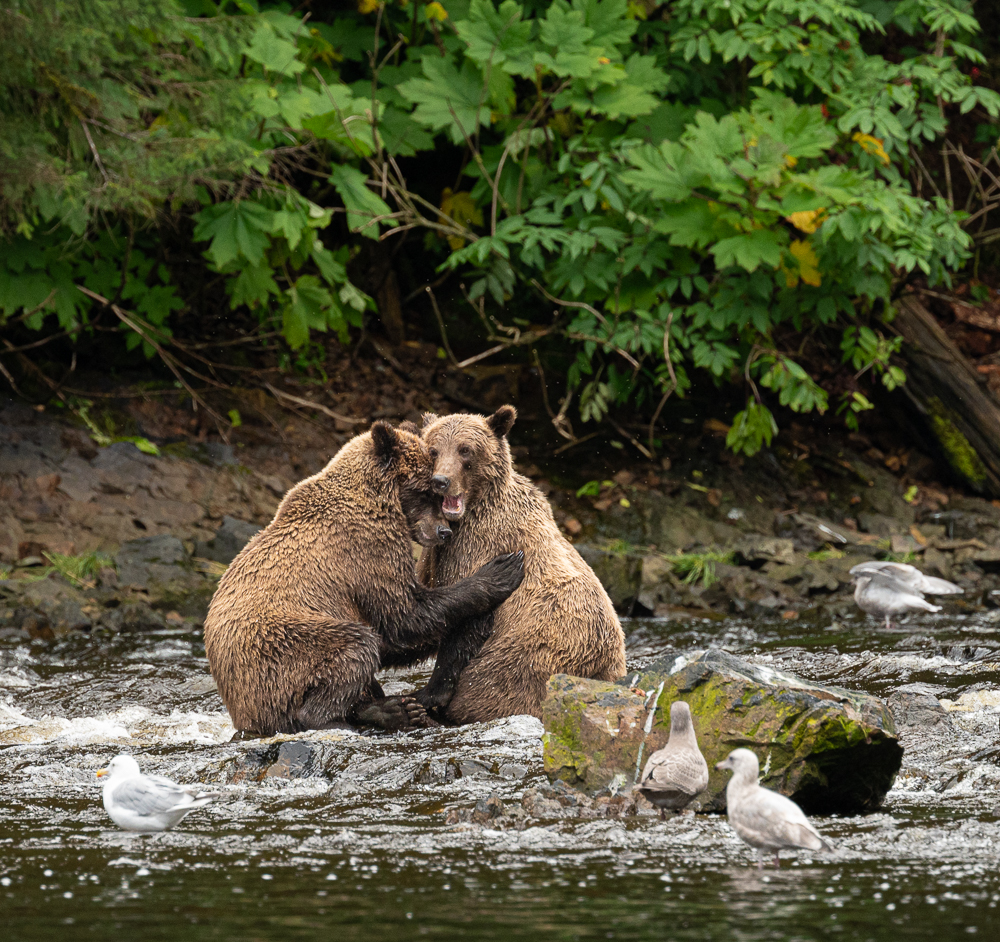
At one point the sow with the three cubs flopped down in the grass fairly close to us, and we thought she was going to nurse them… but no, the cubs kept bouncing around and exploring, and the sow just wanted some rest. The expression on her face describes life with three little cubs perfectly.
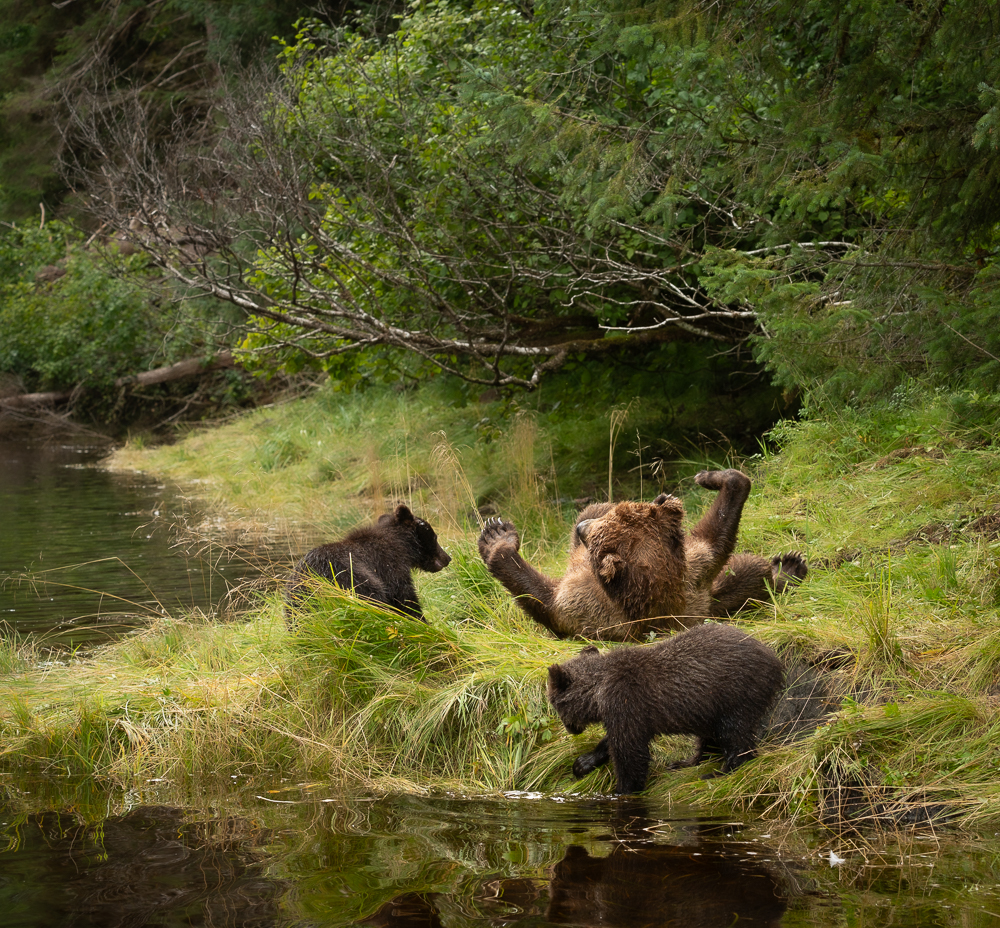
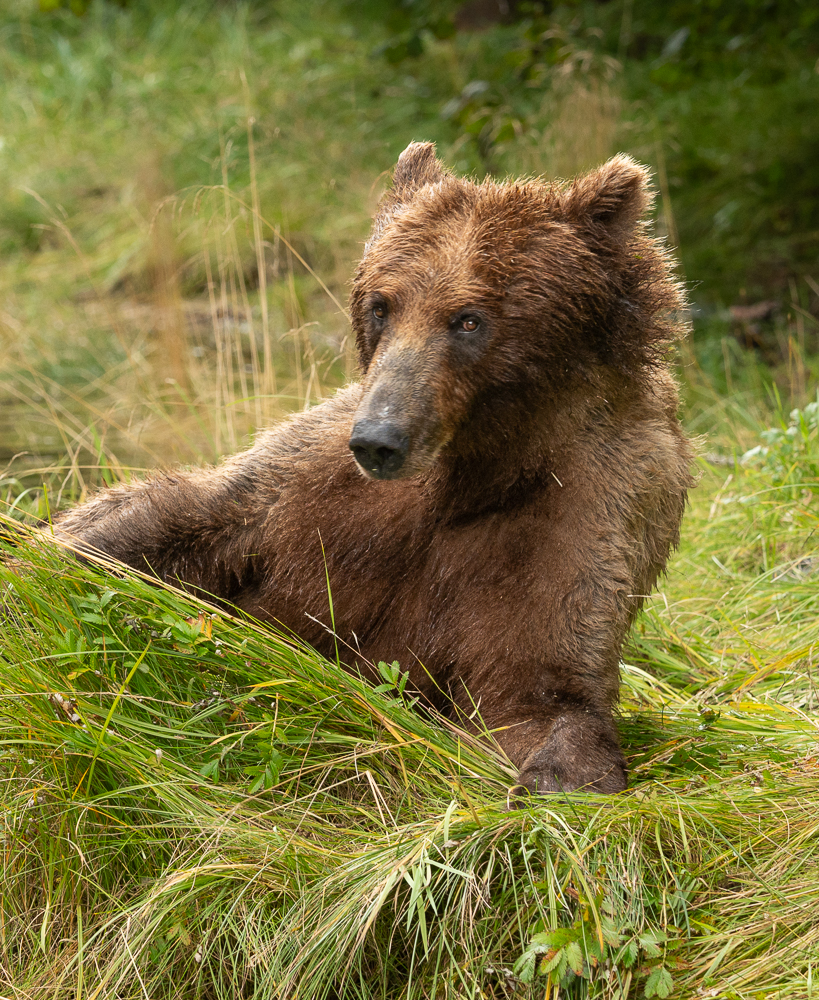
I had a ball, just sitting and watching bears for days and days. Sometimes the tide wasn’t right and the action would be pretty quiet, but then you never know when a bear might wander down to check the creek. Other times, the falling tide would trap fish among the rock pools and there would be 8 or more bears in the stream at the same time. They can come from a number of different directions, so we have to pay attention. I tend to watch bears like a bear – let me explain. When bears are eating, they’re constantly scanning their surroundings. It’s how I know that they’re okay with me – they see me in their scan, but they don’t dwell on me, so I’m okay. If they start to pay attention to me, it means that I’m making THEM nervous – so I will back off until I’m just part of the background. I do the same thing when I watch bears – I scan all the time, because if there’s a rich supply of salmon in the stream, there will be more bears coming out of the woods.
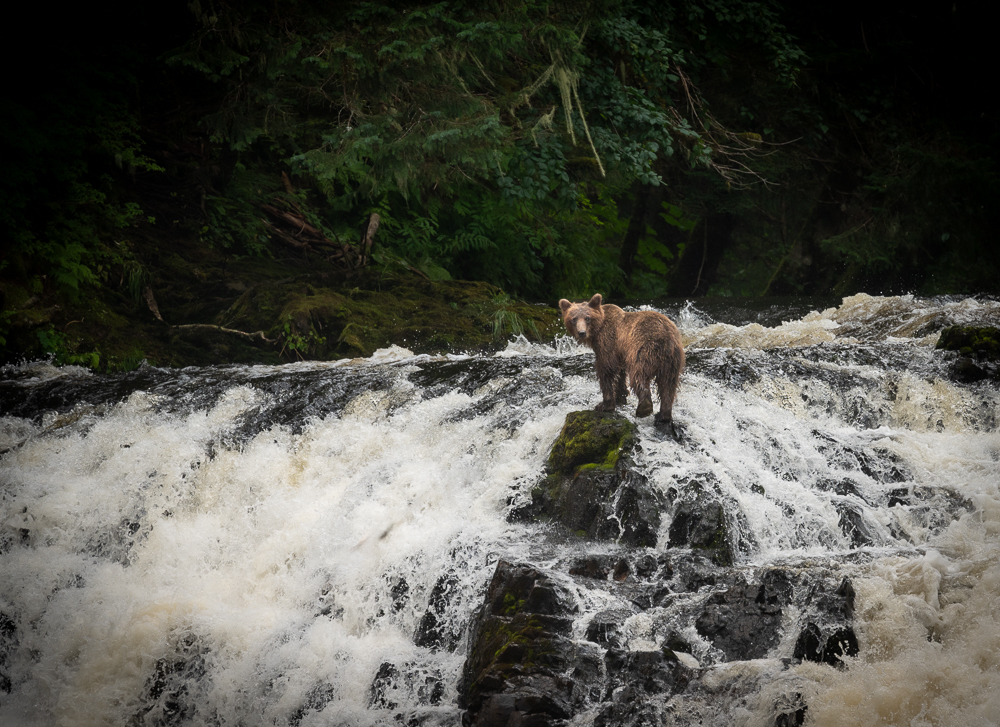
Miss Chevious made a few other close approaches to us, but whenever she started to get a little too close I just had to say “that’s enough!” and she turned and ran off. Are there more bear photos? Yes, an obscene amount of them. Will I inflict more on you? We’ll see. Bear with me…
